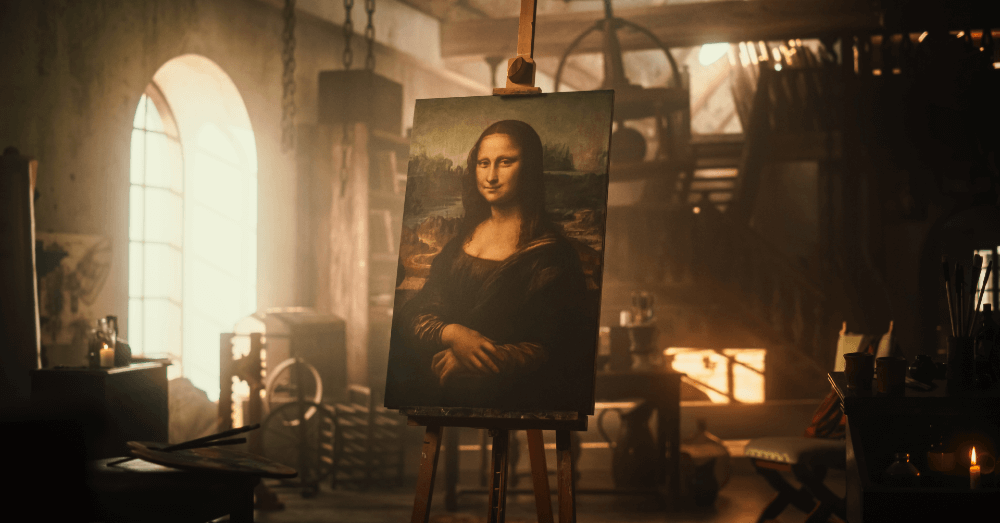The Mona Lisa is the most famous painting in the world. Its fame is much bigger than the painting itself, which is actually pretty small.
This incredibly popular painting wasn’t always as famous as it is today. Certainly, it was a priceless piece of art completed by Leonardo Da Vinci, but an event in 1911 made it much more famous than it had been before that time. This becomes the bizarre true story of Vincenzo Peruggia, who stole the Mona Lisa in 1911 and was celebrated in Italy.
The painting is gone!
A painter by the name of Louis Beroud had been granted permission to paint the iconic portrait as part of his project involving Leonardo Da Vinci. On August 22, 1991, he set up his easel and sat down to begin working, fully expecting the famous painting to be hanging in the Salon Carre within the Louvre Museum. As he looked up to begin working, he saw that the spot on the wall in which the painting normally hung was empty. Beroud alerted the guards, but the painting was gone and had been stolen.
The world paid attention
The news of the theft spread like wildfire than the story was on the front page of every newspaper and mentioned in many articles. The sensational theft of the Mona Lisa captivated the world, leading to widespread speculation and intense public interest. The museum had to be shut down, but when it reopened, more people came to see the empty space than had visited the painting during the previous year. Had this theft taken place today, the empty spot would be all over social media.
The fame increased
Before the theft, most people didn’t pay too much attention to the painting, although most people in the world knew of its existence. Suddenly, after the theft, there was a strong appetite for copies, which led to it being reproduced on postcards, chocolate boxes, leaflets, matchboxes, and magazines and newspapers. During its time away, this painting became the most iconic work of art in the world.
France shut its borders
French authorities began scrambling to figure out where the Mona Lisa had disappeared to. They immediately sealed the borders and searched every ship and train that was leaving the country. This was much more difficult to do in 1911 than it is today, but they were scrambling to find the amazing work of art. At the museum, officers searched for clues in the massive building to find anything they could that would lead to the return of the painting. Eventually, officers found the protective glass case and wooden frame from the painting in one of the stairwells. One fingerprint was lifted from the glass, but no match could be found.
Desperation sets in
Rewards for the painting’s return were offered by French magazines and the Louve, authorities tried to enlist the help of clairvoyants and psychics, and the investigation began to grow cold. French police cast a wide net and questioned artist Pablo Picasso and poet Guillaume Apollinaire due to their interest in art theft. Eventually, no more leads appeared and the trail went cold. For two years, the spot on the wall was empty and stayed that way. It seemed the masterpiece was gone forever.
Selling the famous painting
On November 29,1913, an antiques dealer in Florence, Italy, named Alfredo Geri received a letter from a person identifying themselves as Leonardo Vincenzo. The letter was postmarked from Paris and offered to return a famous Italian reassure to its homeland in exchange for money. Geri agreed to meet the seller, and took Giovanni Poggi, the director of the Uffizi Gallery along with him. The seller turned out to be Vincenzo Peruggia, a humble handyman who had been hired by The Louve Museum to do some work. Once Peruggia presented the men with the Mona Lisa, they called the police and Peruggia was arrested. He freely admitted to the crime and was sentenced to just over a year in prison.
Why the Mona Lisa?
Peruggia admitted he stole the painting because it had been looted from Italy during the Napoleonic Wars, famously hanging in Napolean’s bedroom at Tuileries Palace for a time. Vincenzo thought he would be celebrated as a national hero for returning the painting.
He chose the Mona Lisa because it was Italian, small, and easy to conceal. He stole the painting on a Monday, when the Louve was closed for maintenance and only 12 guards were on duty instead of the normal 166. It was pretty easy to hide the Mona Lisa under his coat.
During the time away, the famous painting, and its thief lived only two miles away from the Louve Museum.

